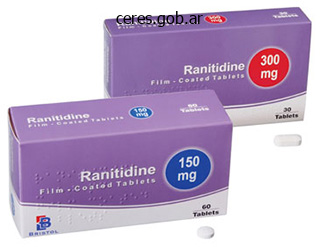
General Information about Ranitidine
Stomach ulcers, also recognized as peptic ulcers, are open sores that develop on the liner of the stomach and can cause symptoms such as bloating, stomach ache, and nausea. Ranitidine might help heal these ulcers by lowering the amount of acid within the abdomen, permitting the lining to heal and preventing additional harm.
Ranitidine is a drugs commonly used for the treatment of situations that cause the body to produce extreme quantities of abdomen acid. This medication is used to alleviate signs associated with circumstances similar to Zollinger-Ellison syndrome, gastroesophageal reflux disease (GERD), and abdomen ulcers. It belongs to a category of medication often identified as H2 blockers, which work by decreasing the amount of acid produced by the abdomen.
In conclusion, Ranitidine is a commonly used treatment for the remedy of circumstances that cause excessive abdomen acid production. It can provide aid from signs similar to heartburn, stomach ache, and ulcers. Like any medicine, you will need to follow correct dosage instructions and inform your doctor of another drugs you take. By doing so, you probably can effectively handle your situation and enhance your general health and well-being.
Additionally, Ranitidine could interact with other medicines similar to anticoagulants, anti-seizure medication, and sure antibiotics. Therefore, it is necessary to inform your doctor of some other medications you take earlier than starting Ranitidine treatment.
While most people can safely take Ranitidine, there are some who should avoid it. This consists of people who have a history of allergy symptoms to any of the components within the treatment, those with kidney or liver illness, and pregnant or breastfeeding ladies. It is necessary to seek the guidance of together with your doctor if you fall into any of these classes before beginning Ranitidine therapy.
Like any medicine, Ranitidine can cause side effects in some individuals. These may embody headache, dizziness, diarrhea, constipation, and rash. It is important to seek the advice of along with your doctor when you experience any of these unwanted effects or some other unusual symptoms.
In patients with GERD, a persistent condition the place abdomen acid incessantly flows back into the esophagus, Ranitidine can help alleviate signs such as heartburn, chest pain, and difficulty swallowing. It works by decreasing the quantity of acid within the abdomen, which in turn reduces the irritation and harm to the esophagus brought on by the stomach acid.
Zollinger-Ellison syndrome is a uncommon disorder during which tumors in the pancreas or small intestine trigger the body to supply massive quantities of abdomen acid, leading to stomach ulcers and different digestive points. In these cases, Ranitidine is used to control the excess acid manufacturing and supply aid from symptoms similar to heartburn, abdomen ache, and diarrhea.
Ranitidine is out there in each prescription and over-the-counter types. Prescription power Ranitidine is usually taken a few times a day, and over-the-counter varieties are taken as wanted for aid of symptoms. It is recommended to observe the directions of your healthcare supplier or the medication label when taking Ranitidine to ensure the correct dosage and length of therapy.
Tests for liver, kidney, blood and placental involvement should always be sought if pre-eclampsia is suspected (see below). In the United States, the incidence of pre-eclampsia has been reported to be slightly higher, possibly because of the high-risk status of the populations studied (usually primiparous women at large teaching centres). The incidence of Antenatal complications: maternal 186 Pre-eclampsia and non-proteinuric pregnancy-induced hypertension pre-eclampsia in women with a single risk factor is approximately 15 per cent. Although the inheritance of pre-eclampsia has yet to be characterized, there is a strong familial predisposition: a family history in either mother or sister increases the risk of pre-eclampsia four- to eight-fold. This genetic predisposition leads to a faulty interplay between the invading extravillous trophoblast cells (of fetal origin) and the maternal immunologically active decidual cells. The faulty interplay results in a failure of trophoblast invasion into the myometrium and the maternal spiral arteries do not undergo their physiological vasodilatation. This inadequate trophoblast invasion is also seen in pregnancies complicated by fetal growth restriction (without pre-eclampsia), demonstrating that the maternal syndrome of pre-eclampsia must be related to additional factors. The diminished dilatation of the spiral arteries, associated increased resistance in the uteroplacental circulation and an impaired intervillous blood flow probably result in an inadequately perfused placenta. Ischaemia or ischaemia/ reperfusion in the second half of gestation produces reactive oxygen species and oxidative stress in the placenta. Pre-eclampsia is associated with lipid changes (there is a two-fold increase in triglycerides and free fatty acids), and an increase in lipid peroxidation, both in the placenta and systemically, suggests that oxidative stress (an imbalance between free radical synthesis and antioxidant defence) may be involved in the endothelial cell changes. A family history in a first-degree relative increases the risk of pre-eclampsia four- to eight-fold, illustrating the strong genetic influence [D].
Ranitidine Dosage and Price
Ranitidine 300mg
- 60 pills - $28.08
- 90 pills - $36.22
- 120 pills - $44.37
- 180 pills - $60.65
- 270 pills - $85.08
- 360 pills - $109.51
Ranitidine 150mg
- 60 pills - $26.27
- 90 pills - $32.31
- 270 pills - $68.55
- 360 pills - $86.68
